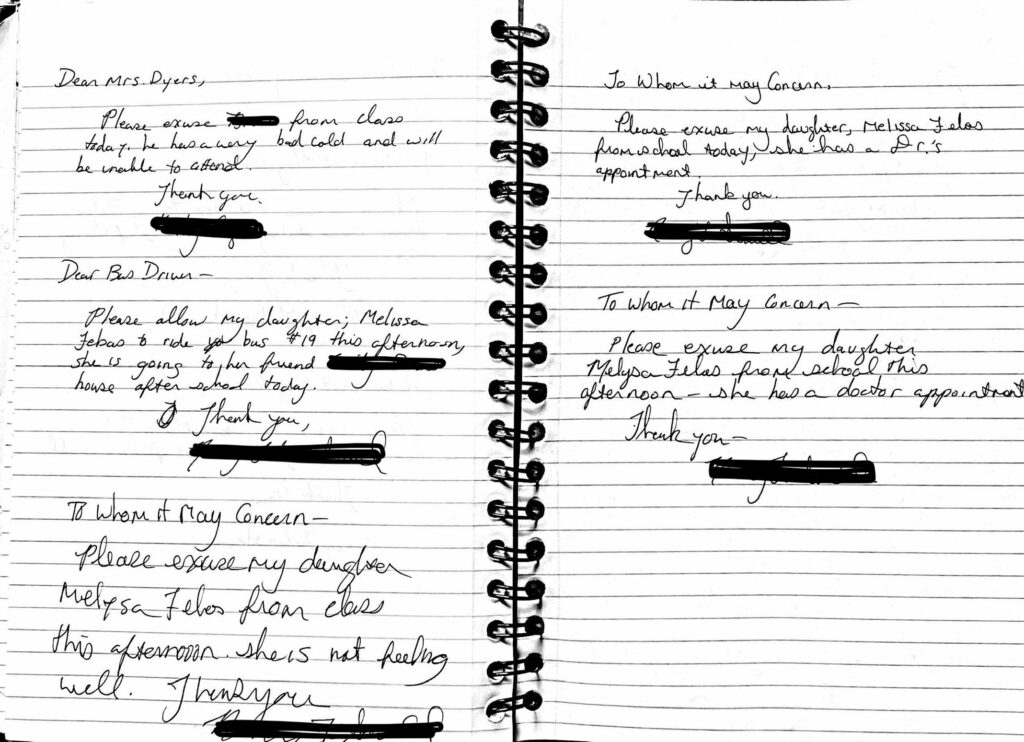I’ve always kept diaries in the style of a catch-all notebook: flipping through them reveals poems, dated journal entries, to-do lists, quotes from books, phone numbers, and overheard dialogue. I found this page in the middle of my diary circa freshman year of high school. I was practicing my grown-up-style handwriting and forgery of my mother’s signature in order to excuse myself, and sometimes my friends, from school. I was failing pretty spectacularly to be convincing, at least to my eye now, but as I recall it mostly worked. I was fourteen or fifteen and immensely frustrated that my teachers insisted on droning about mathematics and the branches of government and books by boring straight people when I had my own reading list to attend to, as well as drugs with which I was eager to experiment. At this point, I had already known for some years that I wanted to be a writer. At the end of the year, I would drop out to pursue a different sort of education.
Melissa Febos is the author of four books, most recently, Girlhood, winner of the National Book Critics Circle Award in criticism, and Body Work: The Radical Power of Personal Narrative. She is the recipient of awards and fellowships from the Guggenheim Foundation, the National Endowment for the Arts, MacDowell, LAMBDA Literary, the Barbara Deming Foundation, the British Library, and others. She is an associate professor at the University of Iowa.
from The Paris Review https://ift.tt/CqYMxOu

Comments
Post a Comment